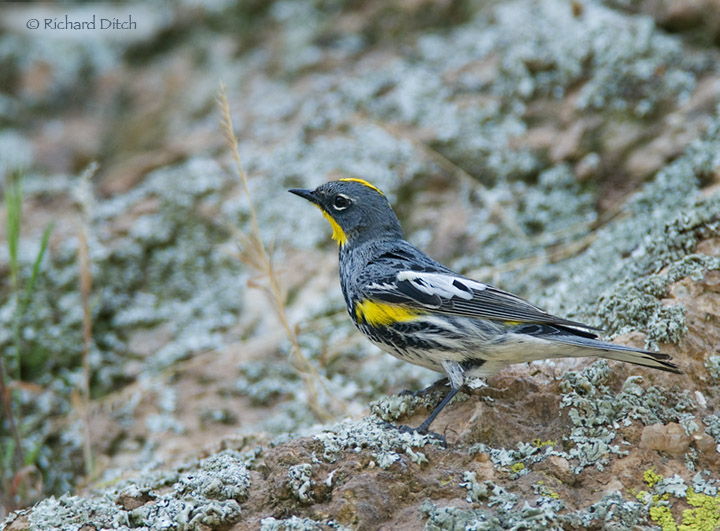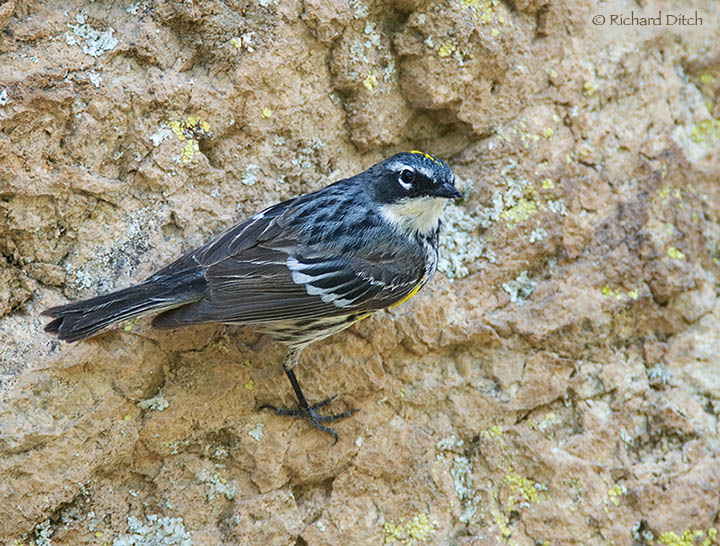
Yellow-rumped Warbler - western Audubon's form
Once upon a time there were two species of warbler that look a lot alike, but had very different ranges in the U.S> and were different enough in plumage to be easily separated in the field. These birds were known as Myrtle Warbler, primarily in the east, and Audubon’s Warbler, primarily in the western U.S.
Then, in one of the periodic movements in ornithological circles, these two formerly separate species were classified as forms of the same super species, and given the over-reaching name of Yellow-rumped Warbler.
But birders love their lists, and since these birds can be told apart when seen, most birders still keep track of both forms (especially of the form that is less likely to be encountered locally), and with a secret hope that some day in the future The Authorities will once again split them into separate species. Hey, its happened a few times before already, like with the Eastern and Spotted Towhees that were known collectively for a while as Rufous-sided Towhee, and the more complex flicker mess that once were three species (Yellow-shafted, Red-shafted, and Gilded), then a single species (Common Flicker), and are now two species (Gilded Flicker and Northern Flicker).
Anyway, both forms of butter butts occur in Arizona, and I was fortunate recently to have males of both forms at the same place in front of my camera. That place is Boyce Thompson Arboretum, where I’ve been spending more time lately with the passerines.

Yellow-rumped Warbler - eastern Myrtle form
The most obvious difference between these two forms is the throat: bright yellow on the Audubon’s; white on the Myrtle. But also note the prominent white eyeline on the Myrtle which is lacking on the Audubon’s.
I spent 24 years birding in Myrtle territory before moving to Phoenix, so they don’t excite me as much as they do my western birder friends. But it was nice to get to spend some time with a well marked Myrtle again and have an opportunity to look at both forms at once.